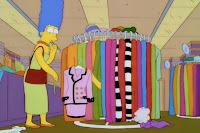
It feels like its about time for another do it yourself project. This one I am pretty excited about how it turned out. In my apartment there is limited counter space, and a small corner to keep all our liquor bottles never remained a small corner. I was considering putting a bar somewhere, but didn't know exactly where to put it or how to construct it. Headed over to pinterest, got some clever ideas and was thinking on where to start when I found a cast away piece of Ikea furniture in the laundry room, something like what I have posted beside, but with 5 shelves/cabinets and just under five feet tall.
So my roommate and I are looking at this thing trying to figure out how to make this into the best bar ever. A little figuring out later, I started taking it apart. The shelves tipped out, so I took the shelf off the door and permanently secured it to the walls, so the doors can still tip out.
I bought some gold chain, a bag of small hooks and 5 magnetic door clasps and used the white paint I had left over from the rocking chair makeover. By attaching the chain to the wall of the cabinet and the top corner of each door, the door won't fall all the way down and it makes for a nice little platform to rest your beverage.
The magnetic clasps are a nice invisible way to keep the doors closed. I sanded the lacquered walls and applied a coat of primer.
Finally, I painted the doors the antique white colour to match the rocking chair, applied my own coat of laquer to protect it from spills and messes and topped the shelf with a piece of sticky-backed tile for extra beverage spilling protection. The last step was to load it up with all our bar glasses, bottles and shot glasses and there you go - a hidden bar in the corner of my living room! Perfect for hosting any party and having your guests entertain and serve themselves while out staying out of the kitchen. What DIY will you be working on tomorrow?
- Kim










